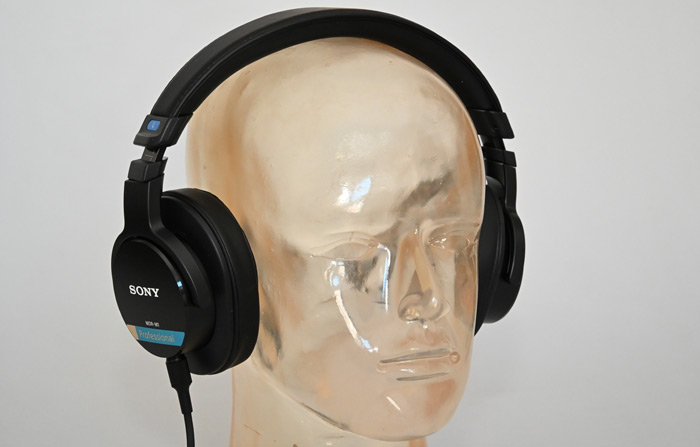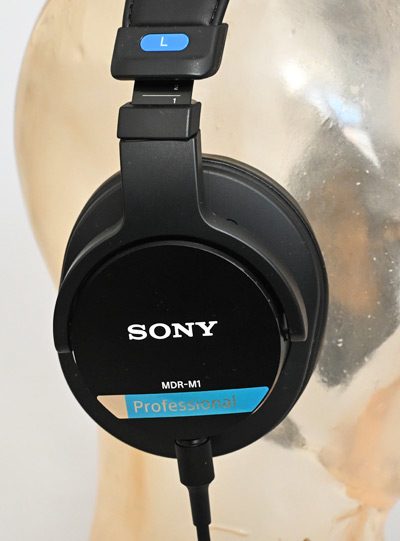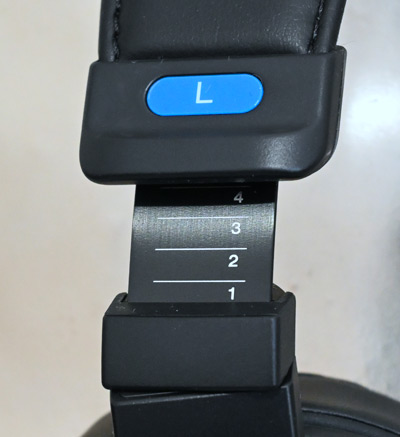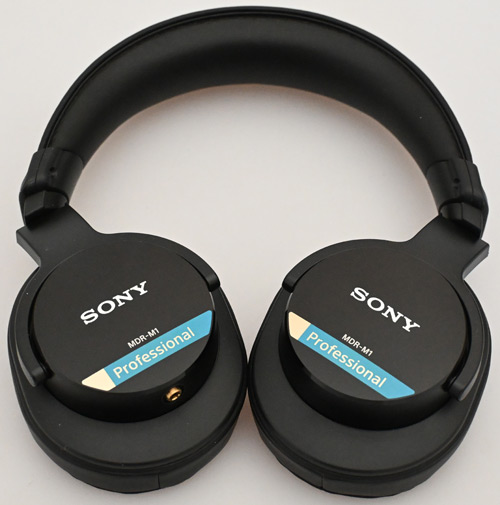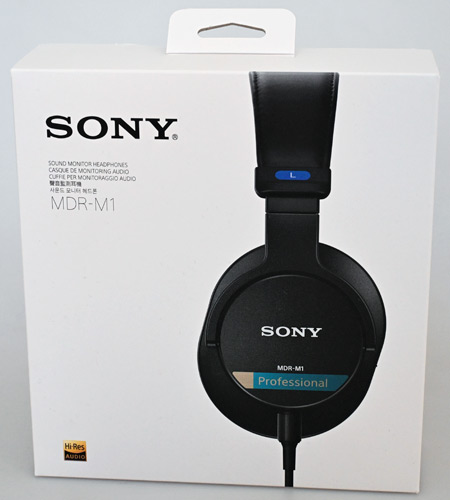Sony MDR-M1
Closed studio headphones with dynamic drivers
Author: Peter Kaminski | photos: Peter Kaminski and archive (1)
In this review, we would like to take a closer look at the acoustically designed Sony MDR-M1 studio headphones with dynamic drivers, which were introduced in September 2024. We have already tested the closed Sony MDR-MV1 headphones. In some parts of this review, we will also refer to the MDR-MV1.
Concept and technology
Like the MDR-MV1, the MDR-M1 is equipped with a 40mm dynamic driver. Visually, it looks very similar to the MDR-MV1, but the impedance is 50ohms, which is about twice as high as the acoustically open model. In addition, the installation and arrangement have also been slightly changed.
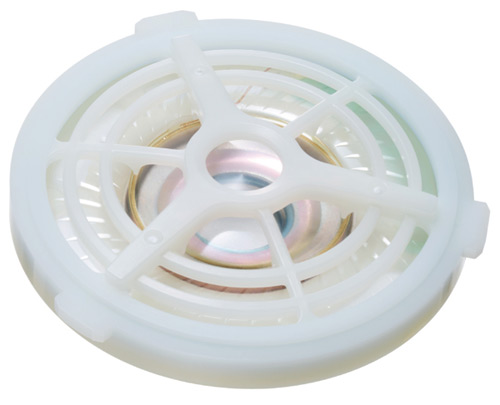
The sensitivity is also slightly higher at 102dB per milliwatt. The manufacturer specifies a frequency range of 5Hz to 80kHz and the rated power as 1,500 mW (IEC). The weight is 216 grams, making it slightly lighter than the MDR-MV1.
The headband can be adjusted by 40mm on each side in ten steps. It's nice that the individual adjustment points are marked and numbered (see image above) so that you can quickly set the same adjustment on both sides.
The MDR-M1 has a double swivel joint and can also be folded allowing it to lie flat on a table. The headband and ear cups are covered with synthetic leather.
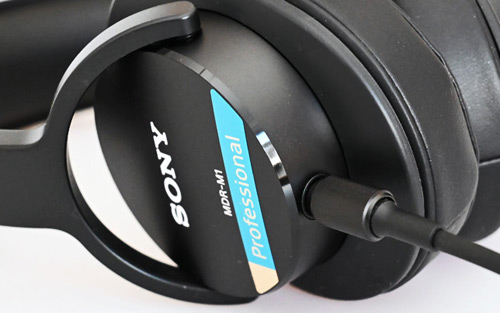
The jack plug can be locked in place with a thread, preventing it from getting loose on its own. The cable is plugged into the left ear cup. Like the MDR-MV1, the MDR-M1 is equipped with a TRRS jack socket, allowing for balanced operation, which is not often the case with closed headphones.
Scope of delivery
The first positive thing to note is that the packaging is plastic-free. The MDR-M1 comes with a 1.2-meter and a 2.5-meter high-quality cable, each with a 3.5mm stereo plug on one end and a TRRS mini plug on the other, as well as a 3.5mm to 6.3mm adapter.
Practical application
Sony has many products that are labeled “High-Resolution Audio.” These include, for example, the C-100, EMC-100N, and ECM-100U microphones, which have a very wide frequency range of up to 50kHz. These high-quality microphones are often greatly underestimated. Sony is also following this path with its professional headphones, and both the MDR-MV1 and the MDR-M1 presented here are labeled accordingly. The manufacturer specifies the upper transmission frequency as 80kHz. The argument is often made that these high frequencies cannot be heard anyway. However, such a wide frequency range also means high impulse fidelity, as bandwidth and impulse rise time are related parameters, ensuring high impulse fidelity.
Of course, it is important that the headphone amplifier used also supports this frequency range. We therefore use the SPL Phonitor 2 for unbalanced operation and the Lake People G108 for balanced operation in our headphone tests, as their 3dB points are significantly higher. However, this cannot be expected from many headphone amplifiers integrated into audio devices or musical instruments. If you want to enjoy the high frequency range, then a top headphone amplifier is recommended.
The days when closed headphones were unsuitable for mixing are long gone. Of course, there are differences between open and closed headphones due to their different acoustic designs, but these are becoming increasingly smaller. One advantage of closed headphones is the lower sound emission to the outside and also the sound attenuation of external noise for the listener, which is particularly important in multi-user environments and for musicians during recordings - especially when several instruments are being played at the same time. Nowadays, more and more studios are no longer room-in-room constructions, making complete acoustic isolation from the outside world not possible, and this is where external sound attenuation comes in handy.
I would describe the sound of the MDR-M1 as relatively linear - although the bass reproduction still offers sufficient punch. The ratio of the bass, midrange, and treble frequency ranges is very well balanced in the MDR-M1 and perhaps even slightly more neutral than in the MDR-MV1. As expected, the impulse fidelity is very high due to the design. This is particularly important with closed headphones, as they are sometimes used with single instruments as source material and are therefore fed with extreme impulses, which the MDR-M1 can handle with ease. With the MDR-M1, you can venture into mixing and music production. The linear frequency response allows for an excellent assessment of audio material at all times.
Conclusion
The Sony MDR-M1 costs around $250, making it slightly cheaper than the open MDR-MV1. The price difference is likely to be more political than anything else, as the MDR-M1 is simply a different concept with a different focus and is not inferior to the MDR-MV1 in terms of quality. Whether the MDR-MV1 or the MDR-M1 presented here is the better choice simply depends on your requirements and circumstances. In the end, both are high-quality headphones. If you are more exposed to background noise or need to use headphones and speakers at the same time with several people in the room, the acoustically closed MDR-M1 is likely to be the better choice.
 How to resolve AdBlock issue?
How to resolve AdBlock issue? 